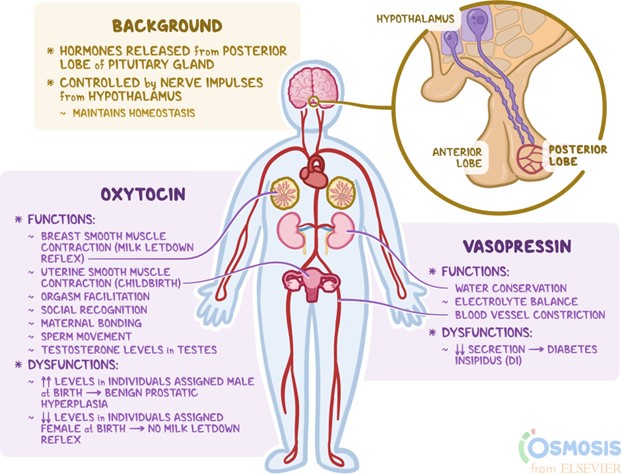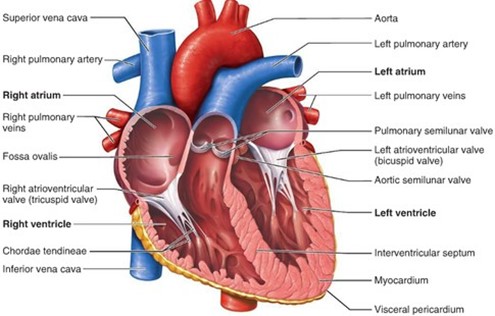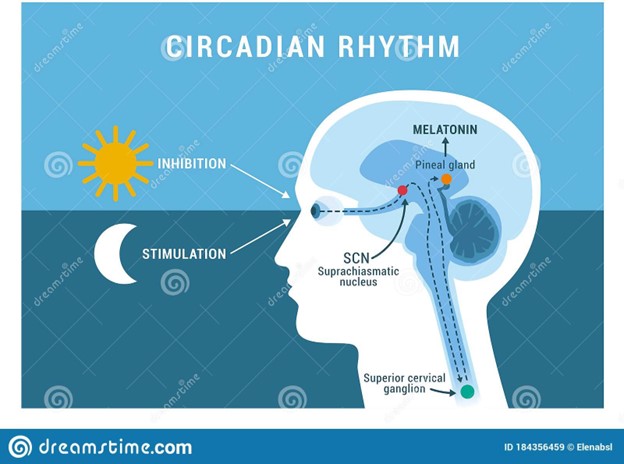Hormones that the posterior pituitary secretes are synthesized in the:
Anterior pituitary.
Hypothalamus.
Thalamus.
Posterior pituitary.
The Correct Answer is B
Hormones that the posterior pituitary secretes are synthesized in the hypothalamus.

They are made by neurons in the hypothalamus and stored and released by the posterior lobe of the pituitary gland, a small organ at the base of the brain.
They regulate water balance, blood pressure, and uterine contraction in the body.
Choice A is wrong because the anterior pituitary synthesizes its own hormones, such as growth hormone, thyroid-stimulating hormone, and prolactin.
Choice C is wrong because the thalamus is not involved in hormone synthesis or secretion. It is a part of the brain that relays sensory and motor signals to the cerebral cortex.
Choice D is wrong because the posterior pituitary does not synthesize hormones. It only stores and releases hormones made by the hypothalamus.
Nursing Test Bank
Naxlex Comprehensive Predictor Exams
Related Questions
Correct Answer is A
Explanation
The right atrium receives blood directly from the superior vena cava, inferior vena cava, and coronary sinus.

The superior vena cava and inferior vena cava bring deoxygenated blood from the upper and lower body, respectively.
The coronary sinus brings blood from the heart muscle.
Choice B is wrong because it excludes the coronary sinus, which also empties into the right atrium.
Choice C is wrong because it includes the pulmonary veins, which carry oxygenated blood from the lungs to the left atrium, not the right atrium.
Choice D is wrong because it only includes the pulmonary veins, which are not connected to the right atrium at all.
Correct Answer is D
Explanation

Circadian rhythm is the term for the biological clock that regulates the sleep-wake cycle and other physiological processes in the body.
Melatonin is a hormone that is produced by the pineal gland in the brain in response to darkness.
It helps with the timing of the circadian rhythm and promotes sleep.
Choice A is wrong because metabolic rate is not affected by light exposure, and thyroxine is a hormone that regulates metabolism, not sleep.
Choice B is wrong because the limbic system is a part of the brain that is involved in emotions, memory, and motivation, not sleep.
Thymosin is a hormone that stimulates the development of T cells, which are part of the immune system.
Choice C is wrong because the circulatory system is the system of blood vessels and organs that transport blood throughout the body, not a part of the brain that controls sleep.
Dopamine is a neurotransmitter that is involved in reward, motivation, and movement, not sleep.
Whether you are a student looking to ace your exams or a practicing nurse seeking to enhance your expertise , our nursing education contents will empower you with the confidence and competence to make a difference in the lives of patients and become a respected leader in the healthcare field.
Visit Naxlex, invest in your future and unlock endless possibilities with our unparalleled nursing education contents today
Report Wrong Answer on the Current Question
Do you disagree with the answer? If yes, what is your expected answer? Explain.
Kindly be descriptive with the issue you are facing.
